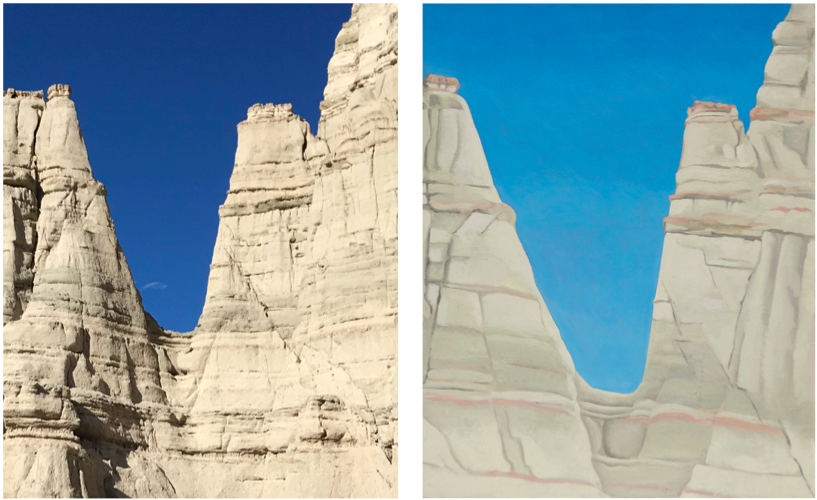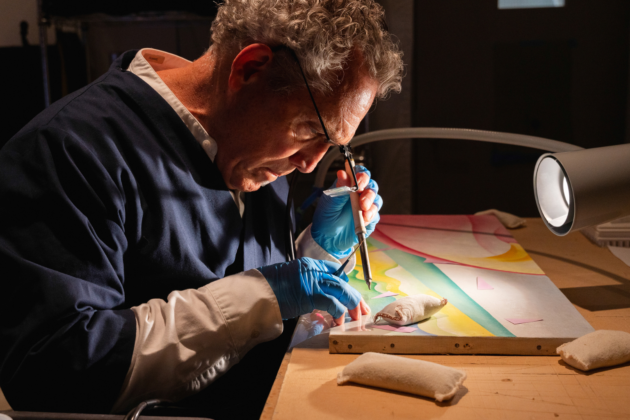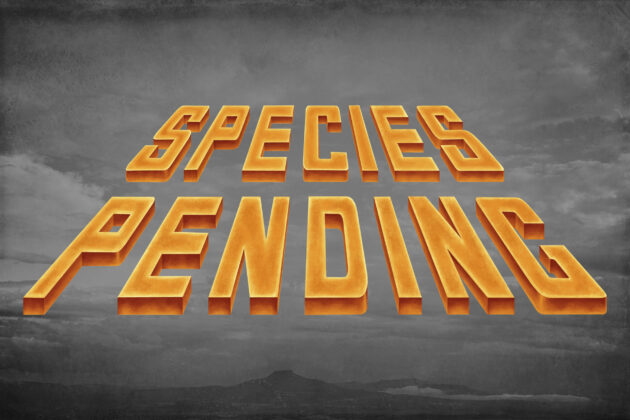
Report from the Faraway: Plaza Blanca
“We’ve had a week of White Place days – the bright blue sky, the clean edges on all the horizon”
In 2015, I embarked on a solo road trip from Northern Colorado to Northern New Mexico. Although I had been several times before, I had never made it out to Abiquiú, the mysterious place where Georgia O’Keeffe spent most of her life. I left Santa Fe one early morning in May and drove along route 285 without a real plan. I dreamed of touring O’Keeffe’s Home & Studio or riding a horse around Ghost Ranch. As a broke graduate student, these goals were a bit too far out of reach.
Instead, I drove around without any directions hoping to stumble upon Plaza Blanca (the White Place), a geological landscape that I read was unlike any other in the Southwest. Surely there would be signs, right? And wouldn’t gigantic white rock formations be hard to miss? It turns out I assumed wrong. Thankfully, a kind cashier at Bode’s General Store in Abiquiú gave me detailed directions. I jumped back in my car, drove down an unpaved county road until I saw the glorious gate that meant I was close to my destination. After driving down an even bumpier road to the parking area, I finally arrived at Plaza Blanca. With no other cars, people, or animals in sight, I walked down the hill towards the looming white cliffs.
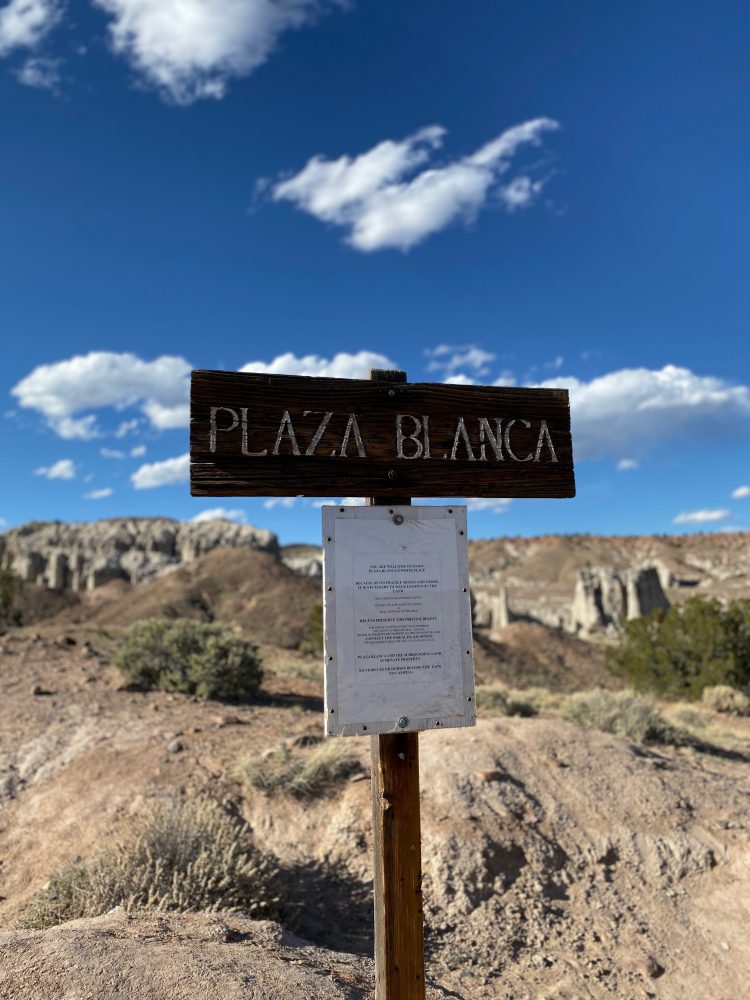
It was not until I started working at the Georgia O’Keeffe Museum that I learned how truly special the White Place was to Miss O’Keeffe. Her many visits even inspired several paintings. Thinking back to those first moments, I wonder if she felt the same sense of anticipation as she walked into the arroyo[1]. Was she overcome with the grandiosity of the rocks? The stillness of the desert? The sounds of the crows flying overhead?

With every step, I felt my breath slow and my mind clear. I walked back into the canyon. I walked until the rocks slowly closed around me and I could walk no further. At no point did I feel claustrophobic. Instead, it felt like the earth was tenderly holding me in its arms.
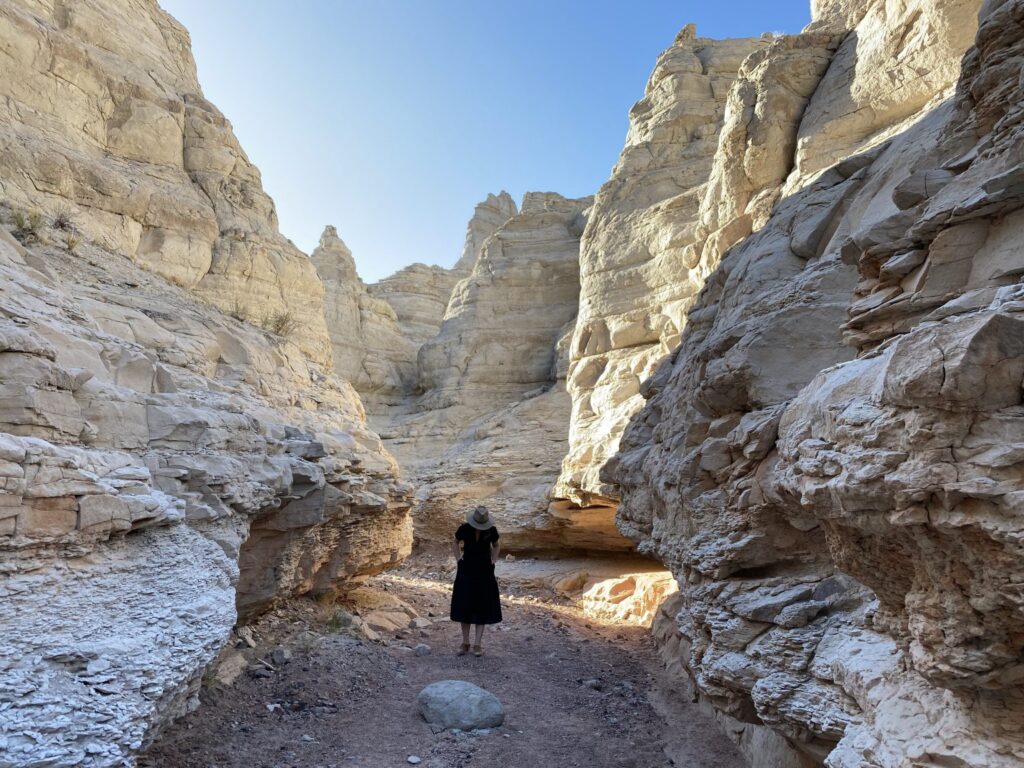
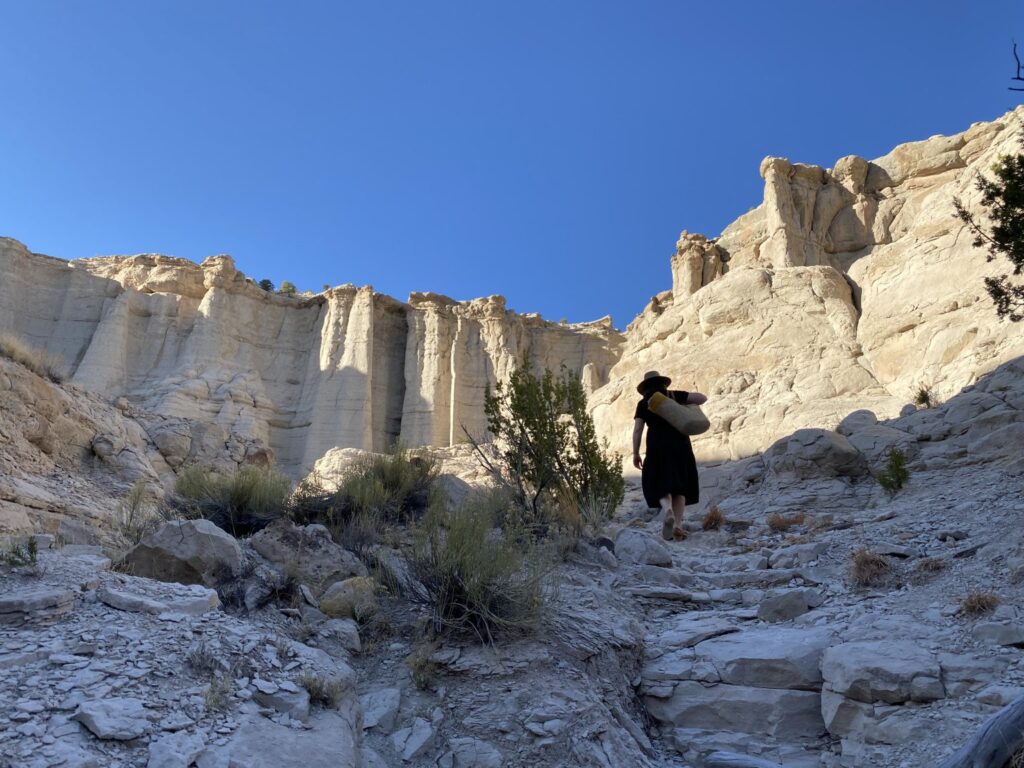
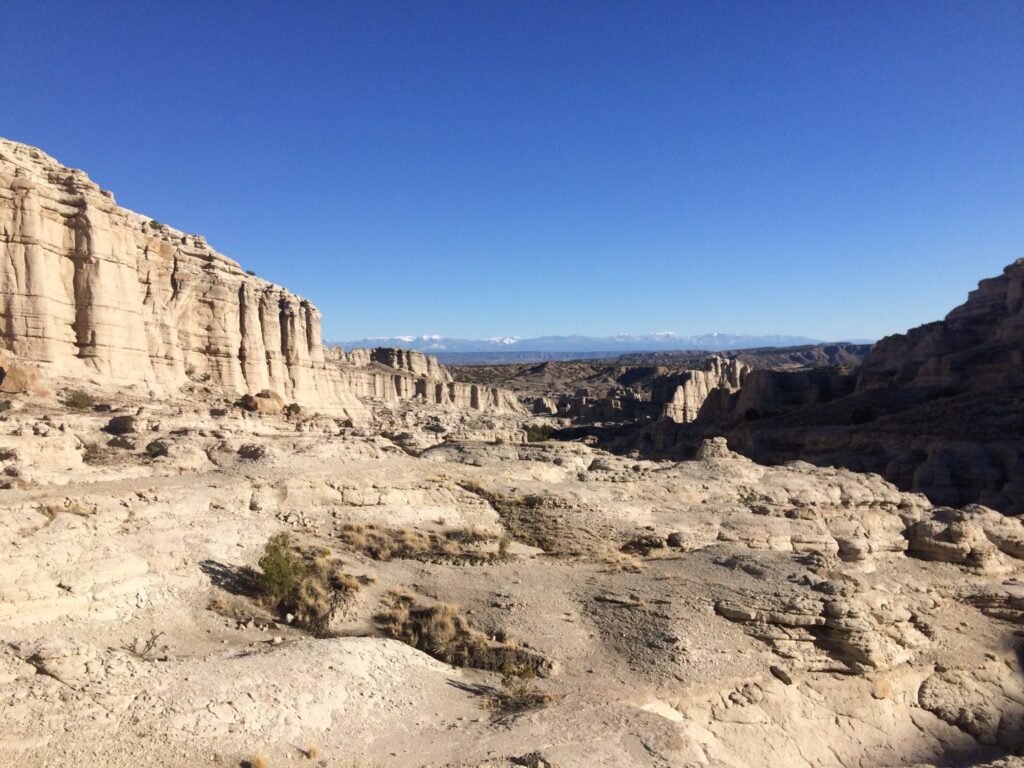
I wished I could feel that sense of awe and wonder every day. Little did I know, just a few years later, I would be living in Abiquiú, on that same county road that led me to Plaza Blanca the first time around. However, since moving here, I have learned that you do not need to visit Plaza Blanca to feel the awe and wonder. It is all around you everywhere you go — the birds outside your window, the blossoms on the old apple tree, the smell of soil after a summer rain.
While I do enjoy visits to Plaza Blanca, simply stepping outside allows me to slow down and focus on the present moment. During these difficult times, I find it especially comforting to turn to nature to remind myself that I am a tiny being in a gigantic universe.
It is surreal to stand in front of a rock formation that Georgia O’Keeffe painted but no matter where you are right now, you too can have a White Place day – simply by looking closer at the world around you, feeling the sunshine on your face, and holding onto an ever-present sense of adventure.
Plaza Blanca is located on the property of the Dar-al Islam Education Center. Plaza Blanca is both monumental and fragile. If you are fortunate enough to visit, please be gentle and follow ‘Leave No Trace’ principles.
[1] Arroyo is a word used in the Southwest to describe a small steep-sided watercourse or gulch with a nearly flat floor. It is usually dry except after heavy rains.
